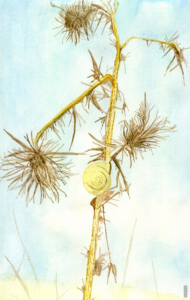The Invisible Intruders
Viruses are tiny organisms that can cause a wide range of diseases in humans, animals, and even plants. They have been around for millions of years and have evolved to become highly effective at spreading and infecting their hosts. But how exactly do these invisible intruders make their way from one person to another?
1. Airborne Transmission
One of the most common ways viruses spread is through airborne transmission. When an infected person coughs or sneezes, tiny droplets containing the virus are released into the air. These droplets can then be inhaled by others nearby, allowing the virus to enter their respiratory system. This is how respiratory viruses like the common cold, influenza, and COVID-19 spread so easily.
2. Direct Contact
Viruses can also spread through direct contact with an infected person or their bodily fluids. This can occur through activities such as shaking hands, kissing, or sexual contact. Some viruses, like HIV, hepatitis B, and herpes, are commonly transmitted through direct contact. It is important to practice good hygiene and take precautionary measures to prevent the spread of such viruses.
3. Contaminated Surfaces
Another way viruses spread is through contaminated surfaces. When an infected person touches a surface, such as a doorknob or countertop, they leave behind tiny particles of the virus. If someone else touches that same surface and then touches their face, the virus can enter their body through the eyes, nose, or mouth. This is why it is crucial to regularly clean and disinfect frequently touched surfaces.
4. Vector-Borne Transmission
Some viruses rely on vectors, such as insects or animals, to spread from one host to another. Mosquitoes, for example, can transmit diseases like dengue fever, Zika virus, and malaria. These vectors become infected when they feed on an infected host and then pass the virus on to a new host during their next meal. Preventing these vectors from breeding and taking protective measures, such as using insect repellents, can help reduce the spread of vector-borne diseases.
Post
Post
5. Food and Water
Certain viruses can also spread through contaminated food and water. This often occurs when food or water is contaminated with fecal matter containing the virus. Inadequate sanitation practices and poor food handling can contribute to the spread of these viruses. It is important to ensure food safety by thoroughly cooking food, practicing good hygiene, and drinking clean water.
Stopping the Spread
Understanding how viruses spread is crucial in preventing and controlling outbreaks. By practicing good hygiene, such as washing hands regularly, covering coughs and sneezes, and staying home when sick, individuals can help reduce the transmission of viruses. Additionally, vaccination plays a vital role in preventing the spread of many viral diseases. Vaccines help build immunity and protect individuals from becoming infected or spreading the virus to others.
Viruses are remarkable in their ability to adapt and spread. By being aware of the various ways they can be transmitted, we can take proactive measures to protect ourselves and others from their harmful effects. Stay informed, stay safe, and together we can combat the spread of viruses.



